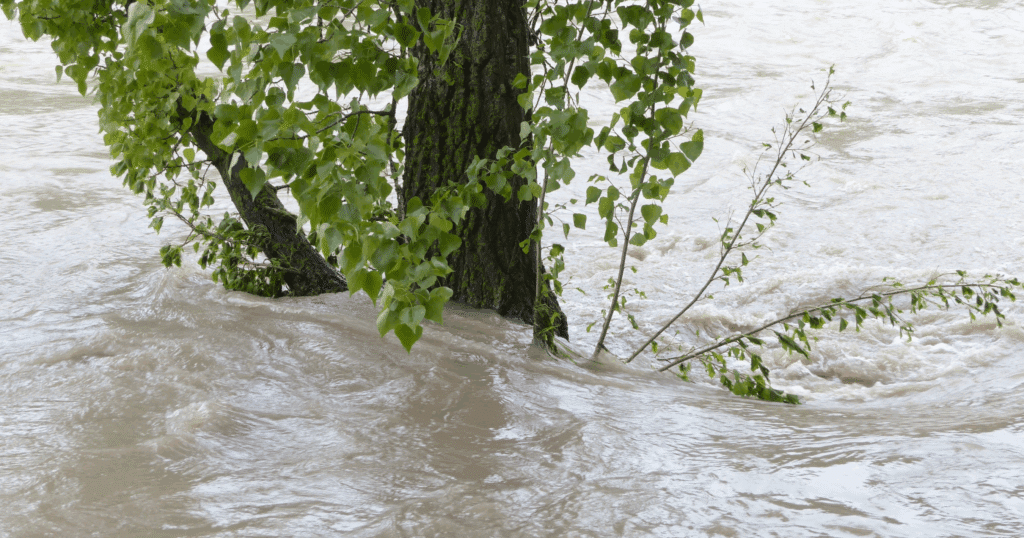
Recent extreme weather events in Central Texas have underscored the necessity of having a fully developed and site-specific Storm Water Pollution Prevention Plan (SWPPP).
As rainfall intensity and frequency increase, even well-constructed developments are facing unprecedented hydrological stress. The challenge lies not only in the volume of precipitation but in the region’s inherent limitations in absorption, drainage, and stormwater infrastructure.
The Science of Surface Saturation in Central Texas
The soils across much of Central Texas are characterized by a high clay content, resulting in low permeability and limited infiltration capacity. These conditions, when coupled with rapid precipitation events, cause stormwater to sheet off the surface rather than being absorbed. The result is significant surface runoff, which can lead to erosion, pollutant transport, and structural strain on drainage systems.
The Role of Elevation and Gradient
Topographical features in Central Texas often include steep gradients and undulating terrain. These characteristics intensify stormwater velocity, increasing the erosive force of runoff. Without appropriate slope stabilization and energy dissipation structures, properties are left vulnerable to soil displacement, sedimentation, and infrastructure degradation.
The Purpose and Power of a SWPPP
An effective SWPPP does more than satisfy regulatory requirements. It is a proactive strategy designed to:
- Mitigate erosion and sediment transport
- Enhance downstream water quality
- Maintain slope integrity and vegetative cover
- Ensure proper detention and controlled discharge
- Meet TCEQ and EPA standards while protecting long-term site viability
BPI Partners: Your Strategic Partner in Stormwater Management
At BPI Partners, we specialize in the development and execution of environmentally sound, regulation-compliant SWPPP plans tailored for Central Texas’ unique geological and hydrological challenges. Our multidisciplinary team provides full-service support—from pre-construction planning to post-storm inspections—ensuring your water quality infrastructure operates effectively, even under extreme conditions.
Whether you manage a MUD, HOA, or commercial site, our expert guidance ensures regulatory compliance while prioritizing ecological integrity and site longevity.
Ready to Evaluate Your Current Plan?
If recent storm events revealed vulnerabilities in your drainage systems or water quality infrastructure, it may be time for a comprehensive review. BPI Partners offers expert analysis, SWPPP revisions, and field implementation services tailored to your property’s terrain and risk profile.
✓ Call us at (512) 288-5522
✓ Learn more at bpipartners.com
FREQUENTLY ASKED QUESTIONS REGARDING SWPPP
What is a SWPPP and why is it important in Central Texas?
A SWPPP (Storm Water Pollution Prevention Plan) is a site-specific document required by the TCEQ and EPA to prevent pollutants from stormwater runoff during and after construction. In Central Texas, where clay-heavy soils and steep terrain increase runoff risks, a robust SWPPP is essential for preventing erosion, infrastructure damage, and regulatory violations.
How does Central Texas soil affect stormwater runoff?
Much of Central Texas has high-clay-content soil, which is low in permeability. This means water doesn’t absorb easily and instead runs off the surface quickly, increasing the risk of flooding, erosion, and pollutant transport into nearby creeks and retention ponds.
Who needs a SWPPP in Texas?
A SWPPP is required for any construction activity disturbing 1 acre or more of land or part of a common development plan. HOAs, MUDs, developers, and commercial property owners in Central Texas are all commonly subject to SWPPP requirements.
What happens if my SWPPP is outdated or noncompliant?
An outdated or noncompliant SWPPP can lead to Notices of Violation (NOVs), costly fines, stop-work orders, or even lawsuits. It can also result in long-term site degradation from unmanaged runoff, sediment build-up, and failed water quality infrastructure.
How can BPI Partners help with SWPPP planning and inspection?
BPI Partners provides end-to-end SWPPP services including design, documentation, inspection, erosion control measures, and post-storm evaluations. We specialize in Central Texas topography and soil challenges, ensuring compliance with TCEQ and EPA standards while protecting the long-term viability of your development.
